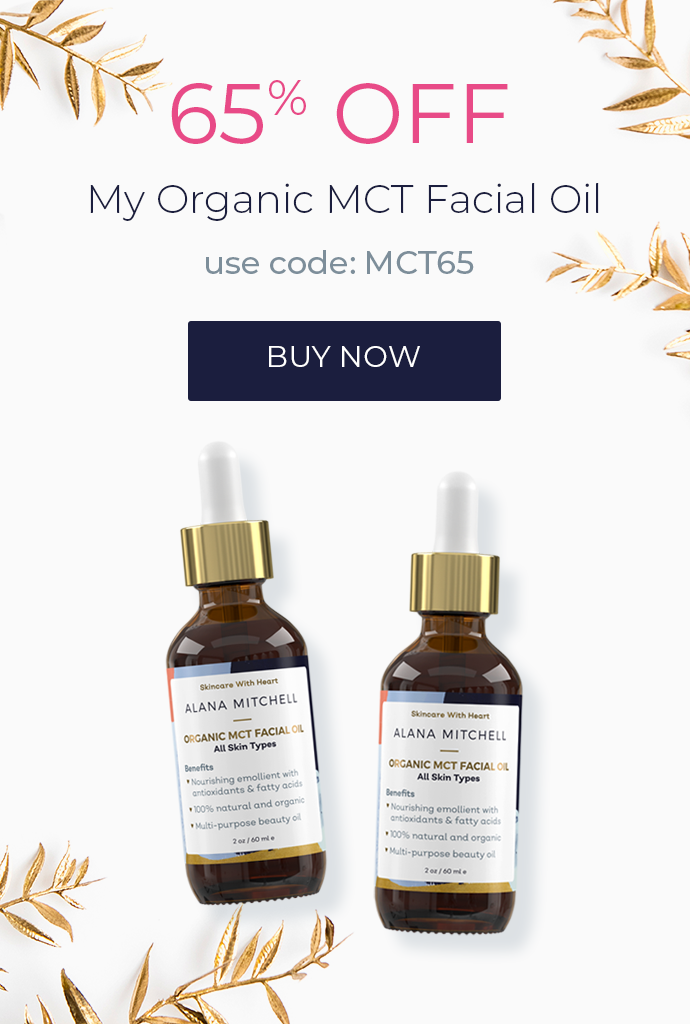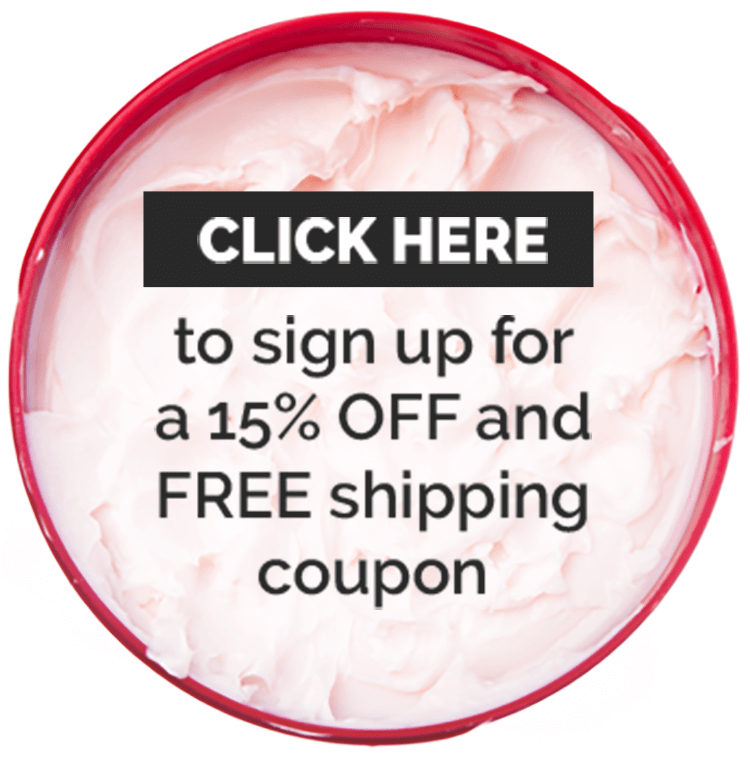
Ever felt like you need a decoder to understand the jumble of words on your skincare labels? Ingredients like Phenoxyethanol and Ethylhexylglycerin can leave us scratching our heads.
Even the ingredients we can understand like “fragrance” could be a blanket label to hide up to 3,000 different, potentially harmful chemicals!
But fear not! We're here to shed light on the mystery and help you make informed decisions about what goes on your skin.
Within the lengthy lists of foreign-sounding ingredients, it’s no wonder that many are wondering 1) what is going on and into the skin and 2) what are the long term consequences? Could they be cancer causing?
As articles spread, x-listing ingredients like aluminum in deodorant and other popular skincare products, it’s a fair question and the answers leave a lot in the gray area.
Clinical testing can only go so far and the long term consequences are hard to trace back.
Let's address a fundamental aspect: quantity matters. The concentration of an ingredient in your product not only influences its efficacy but also determines its safety profile. How much of an ingredient is in your product matters – it can affect both how well it works and whether it’s safe for you!

Why the Confusion?
Now, onto the big question: are these ingredients actually harmful? It’s like a detective story, with some suspects clear as day and others hiding in the shadows.
Navigating the maze of skincare regulation can leave anyone feeling lost. In the U.S., the FDA oversees both cosmetics and drugs, but the testing process can be complex.
Before a product hits the shelves, it undergoes various tests to gauge its short and long-term effects. However, these trials may not fully mimic real-life usage, as they often rely on isolated ingredients and high concentrations.
Short-term studies may catch immediate reactions like irritation, but they often miss the subtler, long-term risks, like cancer. Detecting cancer-causing agents requires extensive, years-long studies involving diverse participants and considering various environmental factors.
With countless products hitting the market daily, pinpointing specific cancer-causing culprits becomes increasingly challenging. Despite the FDA's limited authority in mandating testing, they can intervene if a product is deemed unsafe based on available evidence.
According to the
American Cancer Society, most experts believe that the substances which have been proven to cause cancer in animals may have the potential to cause cancers in humans and should be treated with caution. Before a product can go to market, it must be tested for short and long term effects, whether it’s tested on animals, humans, both, or
neither. Here's the scoop on potential and confirmed carcinogens lurking within mainstream skincare products, along with strategies to steer clear of them.
1) DEA (diethanolamine)
DEA’s, specifically Cocamide DEA & Lauramide DEA, are an additive used to make skincare products more creamy or sudsy.
While these compounds may seem innocuous, exposure to hefty doses of DEA-related ingredients, like monoethanolamine and triethanolamine, has been linked to liver cancers in rodent studies. So, it's best to steer clear.
You'll often find DEA's loitering in your soaps and cleansers, but they're sneaky little devils, also popping up in shaving creams, foundations, lotions, and sunscreens. And that's not all - keep a sharp eye out for their pals, TEA and MEA, lurking in household cleaning products, mascara, and eyeshadows too.
2) PEGs A.K.A. 1,4-dioxane
Let's delve into the world of PEGs - Polyethylene Glycols, to be exact. These sneaky compounds might not always flaunt their presence on ingredient labels, but they're lurking in some skincare products, pulling off a variety of tasks like thickening, thinning, foaming, and locking in moisture.
But this is the catch: during the manufacturing process of certain skincare ingredients, a byproduct called 1,4-dioxane (aka PEG) can rear its troublesome head. Despite manufacturers taking precautions, trace amounts of this compound often remains.
Now, here's the most alarming part: 1,4-dioxane is no friend to our furry companions, and is classified as a known animal carcinogen. And while it hasn't received a warm welcome from humans either, the U.S. Environmental Protection Agency labels it as a probable human carcinogen.
You'll often find this sneaky compound in foaming cleansers, body washes, and select shampoos and conditioners. Since it doesn't flaunt its name on the label, the FDA advises keeping an eye out for ingredients sporting the aliases PEG, Polyethylene, Polyethylene glycol, Polyoxyethylene, or any with "-eth-" or "-oxynol-" in the name.
3) Formaldehyde-releasing preservatives
Let's talk about formaldehyde-releasing preservatives. You're probably not going to stumble upon straight-up formaldehyde in your skincare stash, but these sneaky compounds are worth keeping an eye on.
You see, they're not just lurking in your skincare products; they're also cozying up in plastics, cleaners, resins - basically, things you'd rather not smear on your face.
What's the big deal? Well, these preservatives slowly unleash formaldehyde, a notorious human carcinogen, into your skin, and they've even been associated with leukemia. Yikes!
So, where might you find these troublemakers? Aside from products under your kitchen sink, keep a lookout in your body washes and soaps, particularly for ingredients like DMDM hydantoin, diazolidinyl urea, imidazolidinyl urea, methenamine, quaternium-15, and sodium hydroxymethylglycinate - just to name a few.
4) Parabens
Parabens are a hot topic in skincare. Some say they're bad news, others aren't so sure. As an esthetician, I believe it's essential to take a balanced view. Let's keep an open mind and explore the facts together!
Parabens, a familiar name in the realm of skincare preservatives, often make their appearance in product formulations, albeit in small amounts.
While their natural counterparts can be found in certain foods, the artificial parabens added to cosmetics and skincare raise eyebrows due to their association with specific types of skin cancer.
What's more, these compounds have been known to be notorious endocrine disruptors, mimicking estrogen and potentially paving the way for breast cancer. When paired with other estrogenic compounds, parabens may even have a hand in the development of malignant melanoma, a concerning form of skin cancer.
You'll often spot parabens nestled within water-based skincare staples like moisturizers, cleansers, scrubs, as well as shampoos and conditioners.
With that said, it's crucial to recognize that some reputable brands incorporate parabens and sulphates as preservatives, although in safe quantities. Companies like DMK or Environ keep their preservative levels below 1% to maintain product stability. These trace amounts of natural parabens and sulphates boast antimicrobial, antibacterial, and antifungal properties, serving as effective guardians for both consumers and products alike.
Here's the thing - whether to embrace or avoid products containing parabens ultimately boils down to personal preference. For those among you leaning towards paraben-free formulas, dive into our blog featuring beloved products that are truly paraben-free!
5) BHA (butylated hydroxyanisole) and BHT (butylated hydroxytoluene)
BHA (butylated hydroxyanisole) and BHT (butylated hydroxytoluene) - two synthetic antioxidants that pull double duty as preservatives, extending the shelf life of your favorite products.
And that's not all - aside from skin irritation and allergies, studies have unearthed that prolonged exposure to hefty doses of BHT can spell toxicity for mice and rats.
So, according to the American Cancer Society's playbook, these compounds wave a major red flag. In the realm of skincare and cosmetics, you'll often spot them in lipstick, sunscreen, antiperspirants, moisturizer, and more. They've even made their way into the world of food, playing the role of preservatives there too!
6) Benzophenone
Let's chat about benzophenone - a safeguard against UV light often added to skincare formulations.
But there is a hidden problem - aside from its UV-blocking prowess, benzophenone has a darker side. Studies suggest it can mess with our endocrine system and, even scarier, may up the risk of various cancerous tumors.
And here is where it gets tricky - benzophenone doesn't just go by one name. You might spot it masquerading as BP#, oxybenzone, sulisobenzone, or sulisobenzone sodium.
So, where might you find these problematic additives? Keep a keen eye out in lip balms, sunscreens, and moisturizers.
7) Petrolatum
Petrolatum is a derivative of petroleum jelly commonly hailed as a moisturizing marvel.
When meticulously refined, petrolatum poses no threat whatsoever. It's a skincare superhero, swooping in to rescue parched skin.
But the problem lies here: if it's not refined properly, things take a sinister turn. When petroleum is not fully refined, it can become contaminated with polycyclic aromatic hydrocarbons (PAHs) which have been flagged as a potential carcinogen and cancer-causing agent.
Unfortunately, in the US, it's not uncommon to stumble upon inadequately refined petrolatum in skincare products. Scary stuff, right?
PAHs come in many shapes and sizes, with some wearing the ominous labels of "probable" or "potential" carcinogens. And let's not forget the one that's earned the dubious distinction of being a known carcinogen.
Think of unrefined petrolatum as a magnet for these carcinogenic PAHs. No thanks, right?
So, here's the golden rule: steer clear of moisturizers sporting petrolatum unless the company guarantees it's undergone the full refinement process.
Pro tip: keep an eye out for "white petroleum" on the ingredient list - it's a telltale sign that the petrolatum has been refined to perfection and is safe for use!
8) Sodium laureth sulfate (SLES)
Sodium laureth sulfate (SLES) is another common ingredient in skincare products that's responsible for creating that luxurious lather, bubbles, and foam.
Similar petrolatum, sodium laureth sulfate can also fall prey to contamination by polycyclic aromatic hydrocarbons (PAHs) - another group of chemicals known for their potential carcinogenic effects.
You'll often find sodium laureth sulfate in facial cleansers and body soaps.
Final Thoughts
Understanding what goes into your skincare products empowers you to make the best choices for your skin's health.
Although ingredient labels aim to inform, the truth is that inadequate regulation means that harmful substances can slip through undetected, often masked behind innocuous terms like "fragrance."
Many of these ingredients also carry additional risks with them such as endocrine disruption and environmental toxicity so it’s important to be curious about the products we allow to be absorbed into our bodies.
It's also important to note that the toxicity of an ingredient can sometimes depend on the amount, which ultimately plays a role in its effectiveness and potential harm.
While this list of harmful ingredients is just the beginning, it's a valuable tool to help you navigate the world of skincare more confidently. It's easy to feel overwhelmed by the array of unfamiliar ingredients, but taking the time to educate yourself can make all the difference.
Remember, your skin deserves ingredients that nourish and protect, not ones that pose hidden risks!
This list of carcinogenic ingredients isn’t a comprehensive guide, but rather a tool to use when learning about the ingredients that have become a part of your skincare ritual.
If you ever find yourself puzzled by the ingredients in your favorite products, give them a quick search or check out the
Campaign for Safe Chemicals for a quick recap.
Together, let's prioritize transparency and wellness in our skincare routines, ensuring radiant, healthy skin for years to come!




























